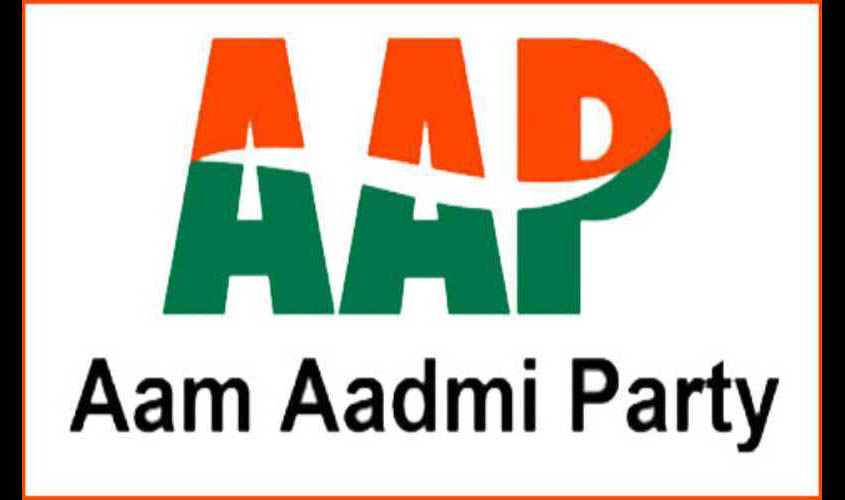Ruling out a pre-poll alliance with the Congress ahead of the 2019 Parliamentary elections, the Aam Aadmi Party (AAP) has sounded the electoral bugle that it would be contesting all the seats in Delhi, Haryana and Punjab, besides some other areas in the vicinity of the national capital. The announcement was aimed at sending a clear message to the voters that the party was completely self-sufficient in doing well in these states and did not need to have any kind of understanding with the Congress, whom it has all along aimed at replacing.
The political interpretation of the AAP’s intent is that Arvind Kejriwal and his colleagues are fully aware that it was vital at this stage to rake in the numbers, since the arithmetic would eventually help when a post-poll coalition is stitched up against the Bharatiya Janata Party, and its partners, in the aftermath of the 2019 showdown. The calculation is that if any kind of Mahagathbandan takes place, it would be following the declaration of results. Prior to this, it just could be some sort of electoral adjustment that would pave way, in a few states, for friendly feuds.
So far as Delhi is concerned, the AAP and its leadership are determined not to give even an inch, putting an end to the speculation that at least two Lok Sabha seats of the city may go to the Congress during a proposed arrangement of Opposition parties. In AAP’s assessment, any concession to the Grand Old Party, whose traditional vote base has already been usurped by Kejriwal and his supporters, could prove counter-productive. Their premise is that under no circumstances can the Congress be allowed to retrieve its foothold in the city after it has suffered a string of losses, with its senior leaders forfeiting their deposits in successive elections.
Even in Punjab, where the AAP had won four out of 13 seats, the party is absolutely confident that it would not allow factionalism in its ranks and a resurgent Congress to come in its way. At the national level, in order to do business of any kind, the AAP would need to have at least ten Lok Sabha members. The hurry in announcing the party’s game-plan was necessitated by ground compulsions, especially in Delhi, where Muslims in particular, were in the process of making up their mind regarding whom to vote for in the Parliamentary polls. The Congress had been attempting to convince the Muslims and other minorities in Delhi that AAP’s footprint was extremely localised and it had no voice beyond the city, and to a small degree in Punjab. Therefore, it would not be in any position to take on the BJP nationally and it was the Congress alone which could provide a viable alternative to the saffron brigade.
Being an astute politician, Kejriwal has shrewdly pre-empted the overtures made by the Congress to some of the AAP supporters while making it abundantly clear that AAP had borne the brunt of the BJP government at the Centre, which has repeatedly attempted to lay hurdles in its working. This has been happening since 2015 when it secured the most magnificent electoral victory in the history of Independent India by winning 67 out of 70 seats it contested.
By taking on both the Congress and the BJP in the states adjacent to Delhi, the AAP is not only trying to assert itself, but is simultaneously sending signals to its opponents that it would continue to carve out its own political niche. In Kejriwal’s overall estimation, his party would be picking up all the seven Lok Sabha seats in Delhi, while eroding the Congress by securing some seats in Punjab and also preventing the BJP from regaining its hold over Haryana.
Ironically, the vote-base of the AAP in Punjab and Haryana bears similarities with that of the BJP, while in Delhi it has managed to win over the core support
Kejriwal’s strategy is meticulously thought through. He has learnt from his previous mistakes and therefore is not pushing nominees simply for the sake of fielding them. He is wiser after the bitter experience of 2014 and now comprehends the value of consolidating his existing strongholds before expanding his sphere of influence. In 2013, when the AAP decided for the first time to enter the electoral arena, the perception was that Kejriwal’s presence in a triangular fight would work to the advantage of the Congress as it would split the anti-Congress vote. Before this view gained momentum, Kejriwal announced his plan to contest against sitting Chief Minister, Sheila Dikshit, thus despatching a strong message of his serious intent. He trounced Dikshit by over 26,500 votes and in nearly half of Delhi the AAP displaced the Congress. In 2015, it created a new record by its overwhelming electoral performance.
As a politician, Kejriwal can never be underestimated; even at the national level, he has the potential of emerging as a premier leader. He is fully aware that this would be possible only if he takes one step at a time. Between us.

